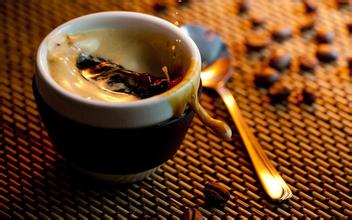Coffee flavor and taste characteristics of Panamanian jadeite manor introduction of boutique coffee beans in producing area
Copper and gold deposits are relatively large, currently ranking the sixth largest copper country, with an output value of US $430 million in ore mining in 2013. There are theoretical reserves of oil and natural gas in the eastern rock strata, which has also become the focus of the international energy industry. for ordinary people, if they want to get out of the countryside, they can only go to the city to engage in the service industry, with a service output value of US $25.1 billion, and transportation, warehousing and tourism are major sources of job opportunities. The port of Gelang in Panama (including three terminals such as MIT, CCT and Cristobal) on the Atlantic coast and the ports of Balboa and PSA Panama in Panama on the Pacific coast rank first and second in container traffic among the major ports in Central and South America. In the first quarter of fiscal year 2014, the tonnage of the Panama Canal reached a record high of 87.7 million tons in a single quarter.
Workers with a higher level of knowledge can choose higher-end banking and insurance in the service industry. Panama is firmly in the position of a regional financial center in Central America and the Caribbean, with total assets of US $97.925 billion.
The national emblem of Panama was launched in 1904 by a brown eagle with its head held high and its wings spread.
Panamanian national emblem
Panamanian national emblem
It stands on the national emblem with a white ribbon with the Panamanian motto "for the benefit of the world". In the middle of the national emblem is the brown isthmus of Panama, the blue Pacific and Caribbean seas, and the Panama Canal that connects them; under the blue sky, a bright moon has risen, the corresponding sunset is still shining in all directions, symbolizing the arrival of Panama's independence "at sunset and moonrise"; the silver sword and rifle crossed on the upper left have experienced the ups and downs of hundreds of years of war on Panamanian land. The T-pick and shovel on the upper right represent the country's call for active construction and hard work; the sheep's horn overflowing with gold coins and the golden two-winged flywheel symbolize the progress and prosperity of the country. Four national flags are decorated around the national emblem, and the top nine golden five-pointed stars represent the Panamanian National Assembly of the nine provinces of Panama as a unicameral system, exercising legislative power. It is composed of 70 members who are directly elected for a term of five years. The current Parliament was formed on 1 July 2009, and the seats occupied by the various parties are as follows: 36 seats for the Democratic change Party (member of the ruling coalition), 17 seats for the Democratic Revolutionary Party, 12 seats for the Panamanian Party, 4 seats for the Nationalist Republican Freedom Movement (member of the ruling coalition) and 1 seat for the people's Party. Sergio Galvez, President of Congress, was elected for an one-year term on July 1, 2012.
In the Pokuit producing area, there are also many excellent manors, except the famous Emerald Manor, Alida Manor, Aqaba Manor and so on, all of which produce high-quality boutique coffee. This is not only due to the superior ecological conditions of the Pokuit region of Panama and the fertile volcanic ash soil of the Baru volcanic land. Another important factor is that the microclimate in the Poquet Heights of Panama is a unique and important resource for boutique coffee in the Pokuit region. This is the Panamanian environment from east to west that allows cold air to converge above 6500 feet through the Central Mountains, thus creating a variety of microclimates in the Pokuit region, making its temperature and rainfall very suitable for plant growth. so the coffee trees grown here grow very well.
In Poquet's unique planting environment, there is naturally not only the rose summer of emerald, the king of coffee, regardless of flavor, quality and value, but I think it is quite extravagant to drink rose summer every day, and even if there is no economic pressure, it is not like eating shark's fin and bear's paw every day. The same is true of coffee. Only if you dabble widely can you enjoy the taste of coffee. Panama belongs to Central American countries, bordering Costa Rica to the west and Colombia to the east. Anyone who knows anything about individual coffee should know that Panamanian coffee is famous in the coffee world as the geisha Geisha (the name of Rosa) in the Emerald Manor. It can be said that it is a country that strives for excellence in coffee and is rich in high-quality coffee.
Panamanian coffee is famous for the rosy summer of the Emerald Manor, which is also famous in the Boquete region of its Chiriqui province. Boquete is a town in Chiriqui, Ricki province, located near the border between Panama and Costa Rica, close to the famous Baru Baru volcano, scenic, rich soil, climate and soil are very suitable for producing quality coffee.

Important Notice :
前街咖啡 FrontStreet Coffee has moved to new addredd:
FrontStreet Coffee Address: 315,Donghua East Road,GuangZhou
Tel:020 38364473
- Prev

Introduction of varieties in producing areas with long-lasting aroma and taste characteristics of coffee from Kimmel Manor, Rwanda
Rwanda has a temperate and tropical plateau climate, and because of its high altitude, its temperature is lower than that of typical equatorial countries. The daily temperature in Kigali, which is located in the middle of the country, is generally between 12 and 27C, with a relatively wide range of fluctuations throughout the year.
- Next

Unique aroma of Ecuador Santa Cruz Manor Coffee Flavor and Taste
Guayaquil is a big city in Ecuador. It has always been thought that cities near the equator will become hot dogs, but although Guayaquil is close to the equator, it is refreshing because it is close to the bay and the sea breeze is blowing. Even in the hottest season, it is not unbearably hot. The monthly average temperature is 28.1 degrees in January and 14.6 degrees in July. Lizard Park is a must place to go.
Related
- Does Rose Summer choose Blue, Green or Red? Detailed explanation of Rose Summer Coffee plots and Classification in Panamanian Jade Manor
- What is the difference between the origin, producing area, processing plant, cooperative and manor of coffee beans?
- How fine does the espresso powder fit? how to grind the espresso?
- Sca coffee roasting degree color card coffee roasting degree 8 roasting color values what do you mean?
- The practice of lattes: how to make lattes at home
- Introduction to Indonesian Fine Coffee beans-- Java Coffee producing area of Indonesian Arabica Coffee
- How much will the flavor of light and medium roasted rose summer be expressed? What baking level is rose summer suitable for?
- Introduction to the characteristics of washing, sun-drying or wet-planing coffee commonly used in Mantenin, Indonesia
- Price characteristics of Arabica Coffee Bean Starbucks introduction to Manning Coffee Bean Taste producing area Variety Manor
- What is the authentic Yega flavor? What are the flavor characteristics of the really excellent Yejasuffi coffee beans?

